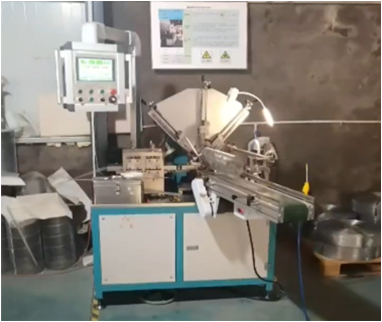 Tel:
+8615930870079
Tel:
+8615930870079
Nov . 05, 2024 09:46 Back to list
dust filter cartridge
Understanding Dust Filter Cartridges Importance, Functionality, and Best Practices
In various industrial and commercial settings, maintaining air quality is crucial for both health and operational efficiency. Dust filter cartridges are essential components in air filtration systems, designed to capture and contain harmful particulate matter, thus ensuring a cleaner and safer environment. This article delves into the significance of dust filter cartridges, their working principles, and best practices for selection and maintenance.
The Importance of Dust Filter Cartridges
Dust filter cartridges play a pivotal role in industries such as manufacturing, pharmaceuticals, food processing, and mining, where airborne dust and contaminants can pose serious health risks. Particulate matter, when inhaled, can lead to respiratory problems and other health issues. Therefore, effective dust filtration is not only a regulatory requirement in many industries but also a commitment to employee well-being.
Moreover, from an operational perspective, dust accumulation can negatively affect machinery, leading to increased wear and tear, reduced efficiency, and higher maintenance costs. Investing in high-quality dust filter cartridges can extend the lifespan of equipment and enhance overall productivity.
How Dust Filter Cartridges Work
Dust filter cartridges function through a combination of mechanical and electrostatic mechanisms, identifying and trapping particulate matter from the air. The cartridges consist of a pleated filter media, which increases the surface area for dust collection. The pleating allows for a more compact design while providing greater filtration capacity.
As air passes through the filter, larger particles are captured on the filter’s surface, while smaller particles may be trapped within the filter media structure through adsorption. Most dust filter cartridges also incorporate an electrostatic charge, which helps attract and hold even finer dust particles, enhancing the filter's efficiency.
Dust filter cartridges come in various materials, including synthetic fibers, cellulose, and glass fibers, each offering different levels of filtration efficiency and suitability for specific applications. The choice of material often depends on factors such as the type of dust being filtered, humidity levels, and the required filtration efficiency.
Selecting the Right Dust Filter Cartridge
Choosing the right dust filter cartridge is vital for optimal performance. Here are some factors to consider
1. Type of Dust Understand the kinds of particulate matter in your environment. Different cartridges are designed to capture specific dust types, such as wood dust, metal shavings, or chemical powders.
dust filter cartridge

3. Efficiency Ratings Look for filters with high efficiency ratings (e.g., HEPA filters) if your application requires capturing very fine particles.
4. Material Compatibility Choose a cartridge material that is chemically compatible with any substances it may come into contact with in your environment.
5. Size and Fit Ensure the cartridge fits well within your existing filtration system to prevent air bypass, which could compromise performance.
Maintenance Best Practices
Maintaining dust filter cartridges is critical for their efficiency and lifespan. Here are some best practices
1. Regular Inspection Check cartridges frequently for signs of wear, damage, or clogging. A clogged filter can impede airflow and reduce system performance.
2. Scheduled Replacements Follow the manufacturer’s guidelines for replacement schedules. Timely changes of cartridges help maintain air quality and system efficiency.
3. Cleaning In some cases, certain cartridges can be cleaned and reused, but ensure to follow specific cleaning protocols to avoid damaging the filter media.
4. Monitoring Air Quality Use air quality monitoring devices to assess the effectiveness of your filtration system and determine when cartridges need attention.
Conclusion
Dust filter cartridges are indispensable in safeguarding health and enhancing operational efficiency across various industries. Understanding their functionality, selecting the right type, and adhering to maintenance best practices can significantly improve air quality and equipment longevity. By prioritizing effective dust filtration, businesses can create a safer, healthier work environment while also optimizing their operational performance.
-
Types and Applications of Air Filtration CartridgesNewsJul.28,2025
-
The Role of Gas Turbine FiltersNewsJul.28,2025
-
Mastering Air Filter Cartridge UseNewsJul.28,2025
-
Advanced Turbine Filters for Modern Gas TurbinesNewsJul.28,2025
-
Cellulose Air Filter Cartridge Advantages in Dust FiltrationNewsJul.28,2025
-
Cellulose Filters for Air Particle ReductionNewsJul.28,2025

 Email:
Email:





